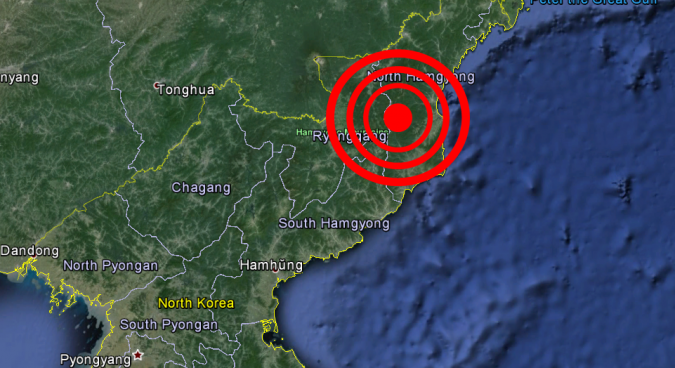Some nations test nuclear devices and try to deny it. Other nations may claim to have conducted a nuclear test but there is no proof. Nuclear warheads have been detonated in the open air, under water and underground. Science has developed different ways to detect the detonation of a nuclear device depending on the medium in which it was detonated.
When a nuclear device is detonated in the open air, it creates multiple frequencies of sound. Some of these are below the threshold of human hearing and are referred to as “infra” sound. The low frequency waves created by a nuclear explosion are so powerful that detectors all over the world can be triggered regardless of where the detonation took place. Volcanoes and powerful storms also generate extremely powerful sonic waves but there are differences between their “sonic signature” and that of nuclear explosions.
When a nuclear device is detonated in water, the sound waves travel faster than they do in the open air. They also dissipate more rapidly with the distance from the explosion than they do in the air. Still, the pressure waves are so intense that they can be detected by hydroacoustic devices that are possessed by many countries. There are no natural underwater phenomena that generate powerful sonic waves that could be confused with nuclear explosions.
When a nuclear device is detonated underground, powerful seismic waves are generated. Earthquakes also generate such waves. One way to tell the difference between a nuclear detonation and an earthquake is to use triangulation to precisely determine the location and depth of the source of the seismic waves. Earthquakes are usually below three hundred feet while nuclear tests are very shallow. Countries participating in the Nuclear Test-Ban Treaty have established a network of three hundred and thirty seven seismic wave detectors all over the world to watch for underground nuclear tests.
In addition to depth, there are differences between nuclear explosions and earthquakes with respect to the type of seismic waves each generates. First, there are primary seismic waves known as P-waves. Then there are secondary or shear waves known as S-waves. Nuclear explosions generate much stronger P-waves than S-waves. Earthquakes generate much stronger S-waves than P-waves.
The North Korean government claims that it carried out an underground test of a hydrogen bomb in January of 2016. The world network of seismic detectors reported a 5.1 magnitude seismic event in N.K. on the 6th of January in 2016. The depth of the event was less than three hundred feet. There were more P-waves than S-waves so an earthquake is ruled out and N.K. did in fact detonate an underground nuclear device.
The next question that needed to be answered is whether or not the device was an atomic bomb which is a fission explosion or a hydrogen bomb which is a fusion explosion. The explosion of a fusion bomb is much more powerful than the explosion of a fission bomb.
A fission explosion is the release of energy when heavy elements such as uranium or plutonium are bombarded with neutrons causing them to create new unstable isotopes. When these isotopes decay, milligrams of matter are converted into pure energy according to the E=MC2 equation.
A fusion explosion is the release of energy when very light elements such as hydrogen fuse into heavier elements such as helium when subjected to enormous temperature and pressure caused by a fission explosion. When this occurs, up to a kilogram of matter can be converted to pure energy via E=MC2.
The energy released by the N.K. event is equivalent to the detonation of a ten kiloton fission bomb. The seismic record of the 2016 explosion is about the same as the detonation of a fission bomb by N.K. in 2013. So, in the final analysis, either the N.K. test was just another fission bomb or they were trying to detonate a fusion bomb but the test failed and only the trigger fission part of the bomb detonated.
